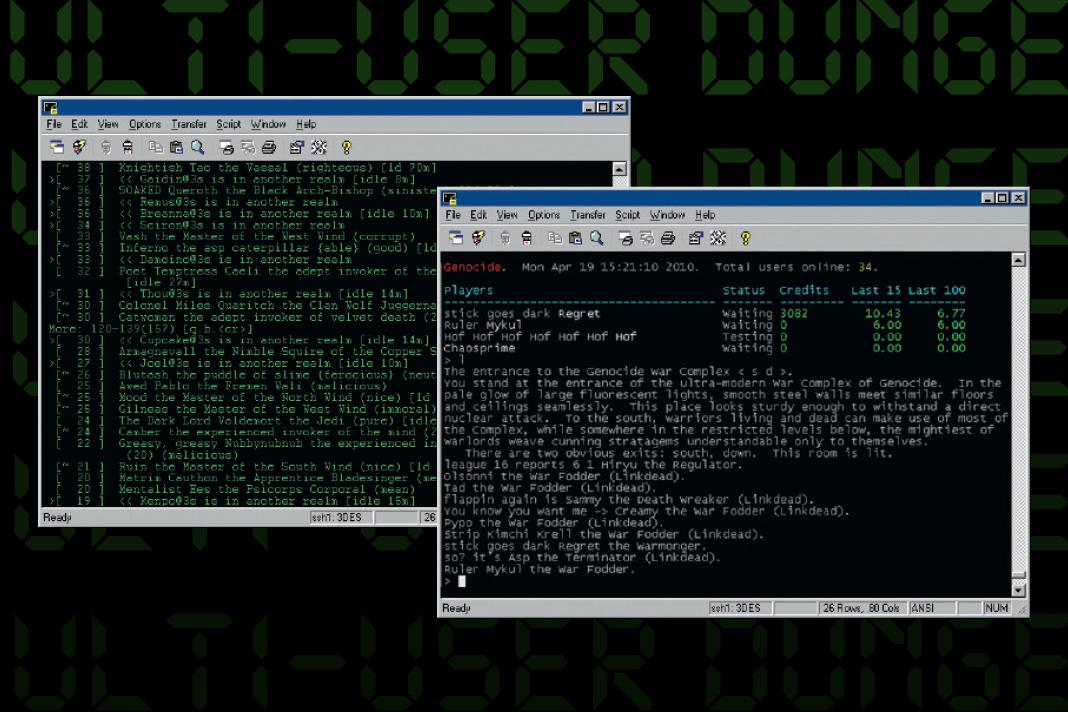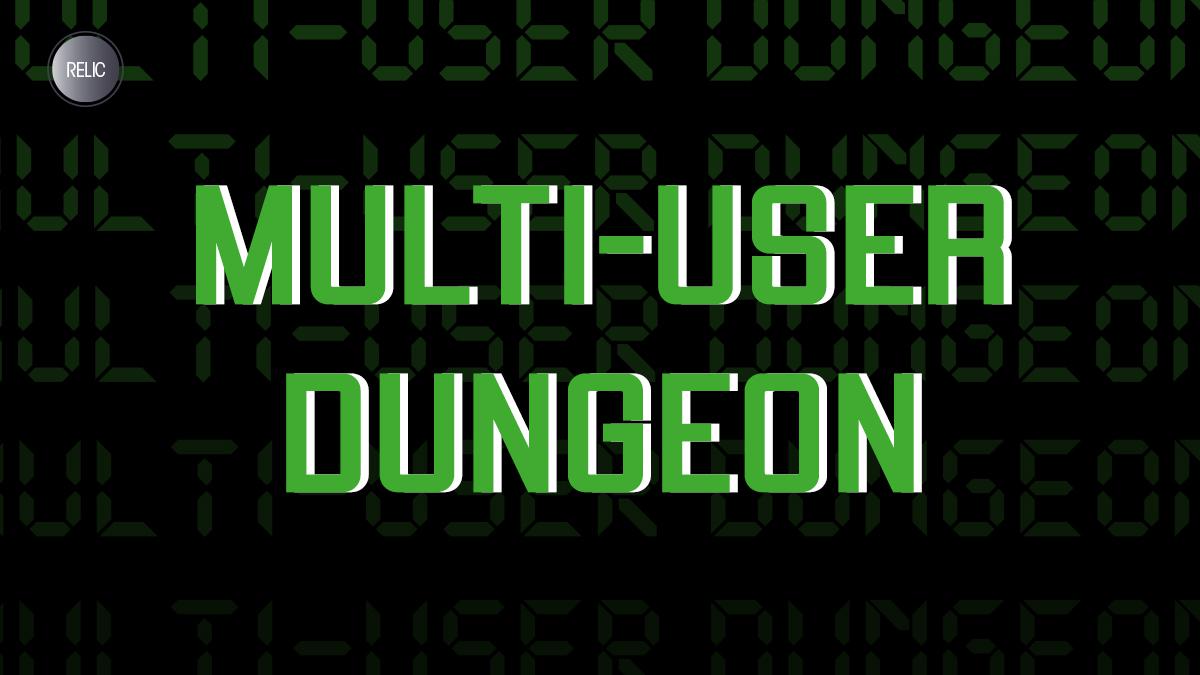Today, we can all interact with each other online through various methods such as text messaging, Facebook Messenger, Instagram, Twitter, Snapchat, game distribution platforms such as Battle.net and Steam, and even in games such as World of Warcraft, Final Fantasy XIV, and more. What started the phenomenon of online chatting and even served as a primitive MMO? The Multi-User Dungeon (MUD) was the precursor to many online multiplayer games and was also a primitive chat system. A typical MUD describes where you are, listing off objects, players, and non-player characters (NPCs) in the area and where the exits are. You enter commands via text, such as attack (creature here) or take (item here). You can also move north, south, east, or west to go to the next area.
Will Crowther is credited with creating the first MUD, 1975’s Colossal Cave Adventure, on the DEC PDP-10 computer. This was essentially a computer version of the popular pen-and-paper game Dungeons & Dragons. The same year, many dungeon crawlers were created on the PLATO system, which was also the precursor to Internet forums, message boards, email, chat rooms, instant messaging, and multiplayer video games. Don Woods expanded on the game the following year. The game is more commonly known as Adventure. It contained references to D&D, including a computer-controlled dungeon master (DM).
The late 1970s saw an explosion in the creation of MUDs all throughout the United States. One of the most important MUDs came out in 1977. A group of MIT students created another PDP-10 game called Zork, which became widely played on ARPANET (the precursor to the commercial Internet). Zork was ported to multiple programming languages throughout the 1970s, and by 1978, Roy Trubshaw created the eponymous Multi-User Dungeon as a tribute to the Dungeon variant of Zork. He then handed off development to Richard Bartle in 1980. MUD basically allowed players to gain points to reach the rank of Wizard, the highest in the game. This gave the player special powers over mortals and could not be killed.

MUD and other variants of the game ran on the local network at the University of Essex. Accessing JANET (the British academic X.25 computer network) allowed players to connect on weekends as well as between 2 am and 8 am on weekdays. MUD also had the distinction of being the first Internet multiplayer online role-playing game in 1980 because the university connected to ARPANET. Bartle had licensed the game to CompuServe (an early Internet service provider) and the original MUD game shut down in 1987. However, this did not stop the MUD from gaining popularity elsewhere in the world.
In the United States, Alan E. Klietz developed Milieu in 1978. This MUD utilized Multi-Pascal on the CDC Cyber 6600 series mainframe. This was operated by the Minnesota Educational Computing Consortium (better known as the developer of the original Oregon Trail). By 1983, Klietz ported it to the IBM XT and renamed it Scepter of Goth. Ten to sixteen users were supported connecting by modem. It was also the first commercial MUD and franchises were sold to other locations. In 1984, Mark Peterson developed The Realm of Angmar and rewrote it 10 years later for MS-DOS, calling it Swords of Chaos. Bulletin board systems (BBSes), a precursor to the commercial Internet, was the preferred way to connect to MUDs.
By the late 1980s and early 1990s, PCs were able to display more complex graphics and the advent of the commercial Internet basically made MUDs obsolete. While graphical MUDs were available as early as 1985, games such as 1999’s EverQuest eventually took the place of MUDs by the late 1990s. At this time, the term massively multiplayer online role-playing game (MMORPG) took the place of graphical MUDs. Many things you see in online communication (instant messaging, chat rooms, etc.) are all a result of MUDs and MMORPGs would have not existed were it not for the development of the initial MUDs.
Also published in GADGETS MAGAZINE August 2019 Issue
Words by Jose Alvarez
